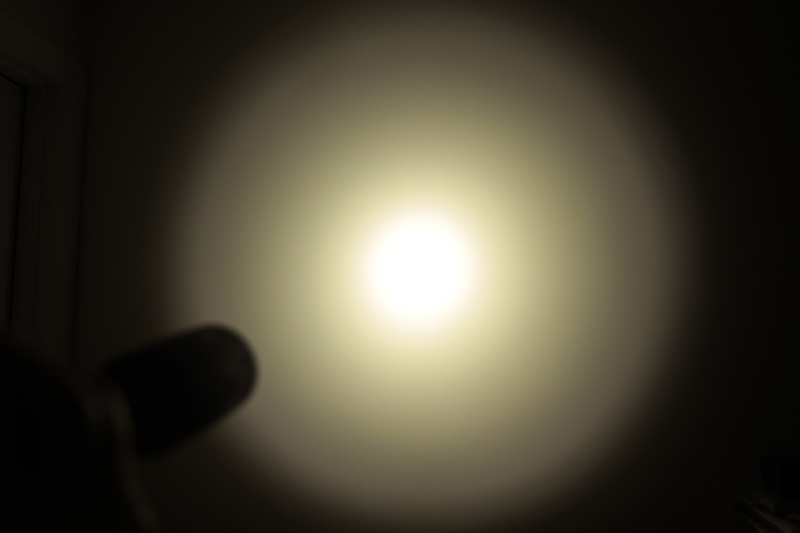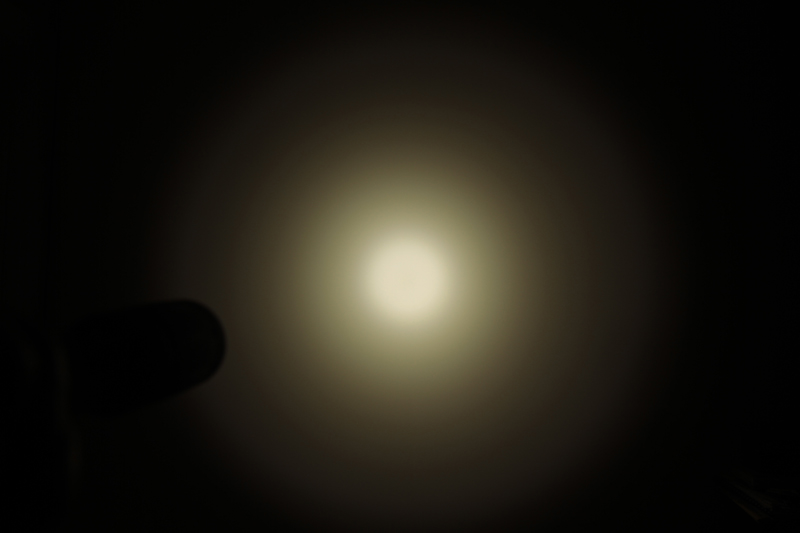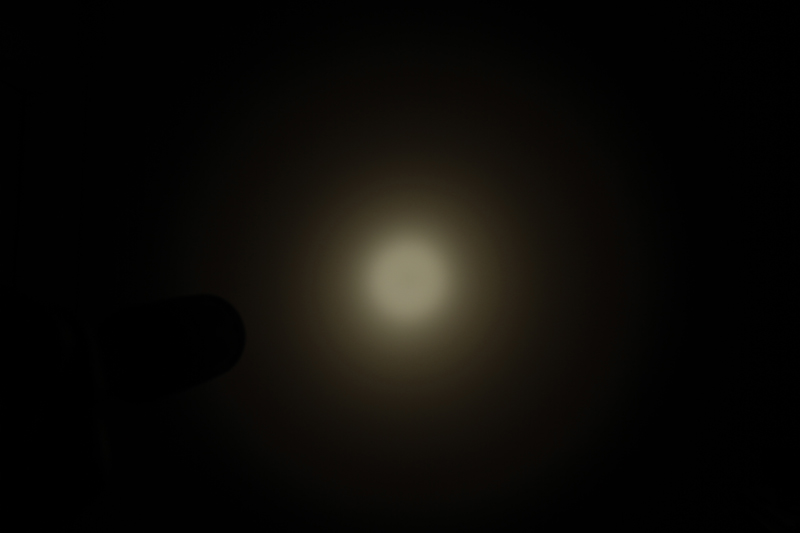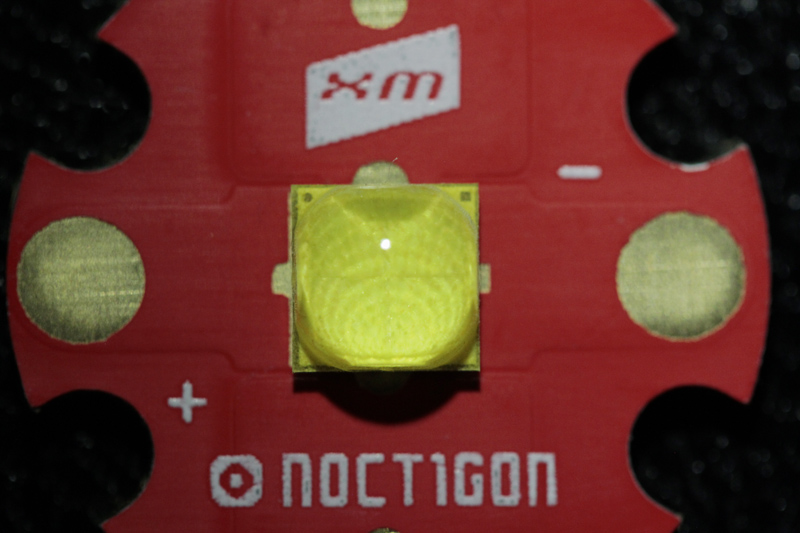pc_light
Enlightened
Although I've successfully swapped several XHP-50 emitters, despite my best efforts at zeroing in the focus I simple could not eliminate the multi-die artifact/shadow from appearing in the hotspot of my most recent host a Surefire KL6 
From what I could gather two popular solutions to eliminating artifacts involve deploying an OP reflector (already in the KL6) and de-doming and/or sanding the surface of the dome itself. (De-focusing the hotspot can also reduce the artifact but that sort of defeats the purpose.)
De-doming has the effect of reducing overall light out the front and/or possibly introducing unwanted green tint in the corona; in exchange for greater emitter intensity and a bright hotspot. Since my light had a relatively deep reflector and the emitter was already well focused I didn't feel this need.
Sanding the dome seemed like a good option but not without its risks. Sanding might also reduce overall output and possibly diffuse the tight hot-spot. Both are bearable trade-offs but an alarming risk that some sanders reported was destruction of their emitters (usually because the emitters were being pushed to/beyond their power limits) because of residue from sanding (or possibly excessive internal reflections?)
After some fooling around to verify that the artifact/shadow results from the lines between the multi-dies themselves and not some other complex interaction of emitter and reflector, I decided to see if just focusing on the die lines (pun) alone would work. I decided to sand just along/above the separation lines/images themselves.
Here's a photo of the final criss-cross sanded XHP-50 -
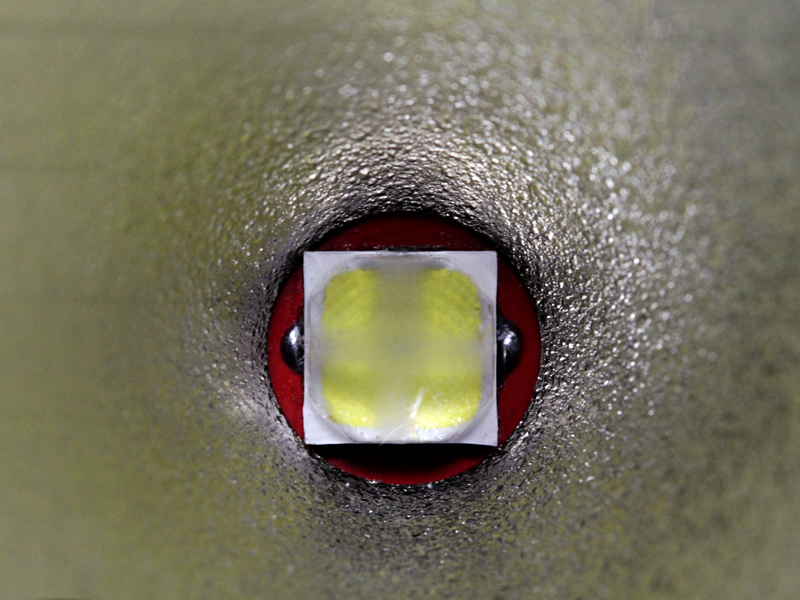
I cut/used a ~1 mm (<1/32 in) wide strip of dry/wet emery about ~80mm (~3 in.) long. Wet/dry emery is more flexible and follows the contours of the dome better than dry coarse sandpaper. I used 1000-grit which is fine enough to just cloud the surface of the dome. It also slides easier than coarser grades of paper. Sort of like flossing my emitter .
.
The resulting beam still has a slight artifact barely noticeable perhaps when white wall hunting but otherwise it's gone. I do not have any before/after beam comparison shots but from what I've read although visible in person, the artifacts don't show in photos anyway.
YMMV but this should work for just about any multi-die emitter. Not sure if it'd be effective enough on a SMO reflector:thinking:. If you try this and it works for you (or even if it doesn't ) please share your findings. AND, if someone who tries this can take actual before and after measurements to quantify any changes in brightness from using this option to eliminate multi-die emitter artifact that would be really useful.
) please share your findings. AND, if someone who tries this can take actual before and after measurements to quantify any changes in brightness from using this option to eliminate multi-die emitter artifact that would be really useful.

From what I could gather two popular solutions to eliminating artifacts involve deploying an OP reflector (already in the KL6) and de-doming and/or sanding the surface of the dome itself. (De-focusing the hotspot can also reduce the artifact but that sort of defeats the purpose.)
De-doming has the effect of reducing overall light out the front and/or possibly introducing unwanted green tint in the corona; in exchange for greater emitter intensity and a bright hotspot. Since my light had a relatively deep reflector and the emitter was already well focused I didn't feel this need.
Sanding the dome seemed like a good option but not without its risks. Sanding might also reduce overall output and possibly diffuse the tight hot-spot. Both are bearable trade-offs but an alarming risk that some sanders reported was destruction of their emitters (usually because the emitters were being pushed to/beyond their power limits) because of residue from sanding (or possibly excessive internal reflections?)
After some fooling around to verify that the artifact/shadow results from the lines between the multi-dies themselves and not some other complex interaction of emitter and reflector, I decided to see if just focusing on the die lines (pun) alone would work. I decided to sand just along/above the separation lines/images themselves.
Here's a photo of the final criss-cross sanded XHP-50 -

I cut/used a ~1 mm (<1/32 in) wide strip of dry/wet emery about ~80mm (~3 in.) long. Wet/dry emery is more flexible and follows the contours of the dome better than dry coarse sandpaper. I used 1000-grit which is fine enough to just cloud the surface of the dome. It also slides easier than coarser grades of paper. Sort of like flossing my emitter
The resulting beam still has a slight artifact barely noticeable perhaps when white wall hunting but otherwise it's gone. I do not have any before/after beam comparison shots but from what I've read although visible in person, the artifacts don't show in photos anyway.
YMMV but this should work for just about any multi-die emitter. Not sure if it'd be effective enough on a SMO reflector:thinking:. If you try this and it works for you (or even if it doesn't
Last edited:
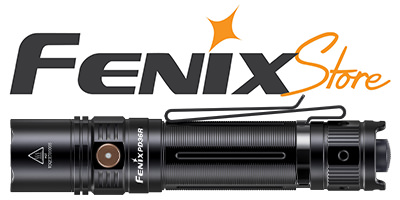

 but I'm looking forward to someone trying this who can take actual measurements and/or photos of before and after.
but I'm looking forward to someone trying this who can take actual measurements and/or photos of before and after.
